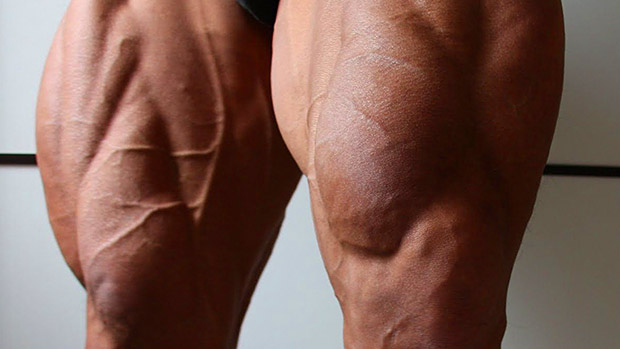Blood Flow Restriction (BFR) training has been around for several years now. But mainstream? Hardly. After all, wrapping your arms or legs up with elastic bands in a busy commercial gym looks a little odd.
Maybe you didn't want to be that guy, but it might be time you ignored the sideways glances and adopted this training method, at least if building muscle quickly is your goal.
A recent study reviewed in MASS (Monthly Applications in Strength Sport) put BFR to the test with a group of powerlifters in a way that can easily be replicated by the average gym rat.
What They Did
Nineteen Norwegian powerlifters – 16 men and 3 women (all of whom were at least strong enough to qualify for the national championships in Norway's IPF affiliate) – were split into two groups that trained concurrently for 6.5 weeks. The program included two separate, one-week microcycles of front squats in weeks 1 and 3 for a total of 10 sessions.
The first group did their usual heavy front-squat training, while the other group did light BFR front squats.
The BFR trainees used approximately 24% of 1RM for week 1 and about 31% of 1RM for week 3. They performed four sets with 30 seconds rest between sets, with the first and last sets taken to voluntary failure and sets 2 and 3 done for 15 reps and 12 reps, respectively. The blood flow restriction wraps remained on between sets at full tightness.
Total volume load didn't differ between groups in week 1, but the BFR group had a significantly greater volume load in week 3. The group doing heavier front squats performed 6-7 sets of 1-6 reps with 60-85% of 1RM. This group didn't take their sets to failure.
What They Found
In the BFR group, the type I (slow-twitch) muscles in the quad increased in size by nearly 12%, while no growth was seen in type II (fast-twitch) fibers. No significant growth was seen in either muscle fiber type in the non-BFR group.
Whole muscle cross-sectional area of the rectus femoris and vastus lateralis also increased by 7-8% as well. Muscle CSA barely changed in the traditional group. Strength gains were similar (and negligible) in both groups, but, as I alluded to earlier, hypertrophy was the star of this study!
How to Use This Info
It's possible that light weight BFR was a such a big departure from their usual powerlifting routine that a novelty effect kicked in, but this probably wouldn't translate to us average Joes.
Also, the BFR group went to failure on the first and last sets. Some research indicates that training to failure may be better than non-failure training for hypertrophy, but other studies have found the opposite, so that may or may not be the reason for the increased hypertrophy seen in the BFR group.
If you throw out those two rationales, it seems that BFR was responsible for the accelerated growth. As such, alternating week-long blocks of BFR training with conventional training could be well worth your time.
To duplicate their efforts, you just need some ordinary elastic knee wraps (no need to buy specialty BFR torture device wraps). Here's Mark Dugdale doing it:
Wrap your legs high on the thigh before the first set of squats and leave them on. Aim for a pressure that's tight, but not painful to the point of turning your nether regions purple. A good rule of thumb: If you get a "better than sex" pump in your quads after the first set, you've probably done it right.
If you want to duplicate the study protocol exactly, do 4 sets, shooting for voluntary failure on the first and last set and doing 15 reps on set 2 and 12 reps on set 3. Rest 30 seconds between sets.
Source
- Bjørnsen T et al. "Type 1 Muscle Fiber Hypertrophy after Blood Flow-restricted Training in Powerlifters." Med Sci Sports Exerc. 2019 Feb;51(2):288-298. PubMed.





